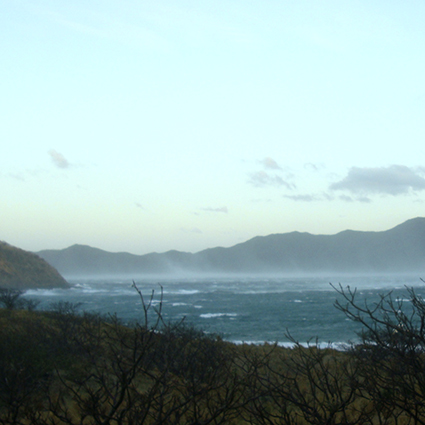Abstract
Shell beds on coastal zones are common and can be generated by phenomena such as storms (hurricanes), tsunamis or anthropic activity. The shell, sandstone and clasts were deposited at the San José Island, and they are interpreted as originated by storms occurring 4360+/-30 BP (before present). This age corresponds with the last part of the Northgrippian (Middle Holocene). They constitute tempestite deposits, where Pinctada mazatlánica is the dominant species (75%), with disarticulated valves and broken borders, and which are closely packed, predominantly concave-up. There are also completed and fragmented shells of other bivalves genera such as Megapitaria sp., Cardita sp., Trachycardium sp., Anadara sp. and Spondylus sp.; as well as reworked gastropod fragments (parts of the columella and the spiral), encrusted and perforated by bryozoans, sponges, polichaetes, serpulids, and some barnacles, which constituted secondary hard substrates. Among them Mallea sp., Conus sp., Strombus sp., Strombus gracilior, Strombus granulatus, Siphonaria sp., Fissurella sp., Murex sp. with sizes These deposits can be correlated with climatic events in the Northern hemisphere, which produced an increase in storm activity and aridity in tropical regions as well as changes in global atmospheric circulation. From a hydrodynamic point of view, this deposit corresponds to several tempestite events, with maximum heightwaves of 7.6 m that corresponds to category 5 cyclonic storm.
Comments

This work is licensed under a Creative Commons Attribution-NonCommercial-ShareAlike 3.0 Unported License.
Copyright (c) 2020 Revista Geológica de América Central






